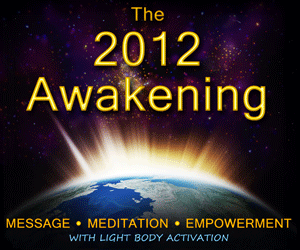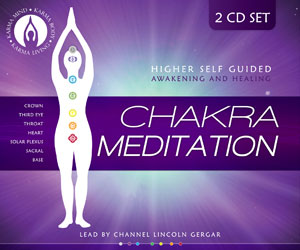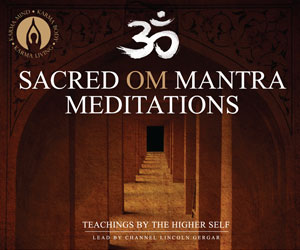At the closing of my videos and in many of my YouTube comments and emails I use the word Namaste. I often receive questions asking me what the meaning of this word is and why I say it. After repeating myself dozens of times and offering only brief explanations, I will now share “the extended version” here. Enjoy!
Namaste
Namaste is a traditional greeting and farewell used in India and through the modern day global spiritual community. It is common to hear two spiritually-minded people say goodbye by speaking “Namaste” and bowing to each other with hands in prayer position at the heart chakra. Often at the close of yoga classes or meditation sessions the instructor and students say “Namaste” and bow.
The word Namaste is the combination of namah + te which means: offering my respects to you.
The spiritual meaning of Namaste is: the Divine in me recognizes and honors the Divine in you.
When speaking Namaste, the hands are held together in a prayer position (palms and finger touching with fingers pointed upward) and located in front of the heart. This symbolizes that the spiritual light (spark of God) that exists in each person’s energetic heart is being recognized and honored.
In spiritual teachings, it is commonly taught that deep within each person’s heart area there is the the “spark of God”. In the Kundalini and Tantra schools which teach the chakra system, this is called the “Lotus of the Heart” in the Anahata Chakra and is represented by a small dot in the center of the Anahata Chakra drawing. In the teachings of Ramana Maharshi and other Advaita teachers, this is called the Spiritual Heart. The majority of spiritual teachings consider the heart the center of man and where man’s connection to God exists.
When the word Namaste is spoken and the hands are held in prayer over the heart, the person will bow forward as a sign of respect and humility. When we recognize the Divine Light in each other we are humbled by the greatest of that which creates us and that which we truly are.
Following the Namaste vocalization and bow, the silence the fills the space is honored. Both greeters remain still for a moment honoring the void of creation and the space, stillness and silence in which all of manifest life is being experienced.
In my opinion, Namaste is one of the most beautiful words on this Earth. Creating the sounds: na + ma + ste (pronounced: nah + mah +stay) has a quality that relates to our own breath and the breath of life the we all share. The ‘a‘ sound (pronounced: ah) is felt as a vibration in the heart area of our chest. Speaking ‘na‘ + ‘ma‘ we feel our heart express up and out through our voice. We feel our love being poured into this salutation. Then we remain aware, respecting the peaceful silence in which we exist.
Namaste.
Sanskrit
Namaste is a Sanskrit word. Sanskrit is the oldest language in the world, with roots more than 3,000 years old. However many sources state that the Sanskrit language is over 8,000 years old. The oldest texts in the world, called the Vedas, are written in the Sanskrit language. Many linguistic scholars state that the modern Indo-European languages originated as Sanskrit, but gradually changed over time. Also, anthropology and archaeology teach that India was the center of civilization, the highest center of knowledge and the most prosperous area of the world in pre-Biblical times.
The most popular and widespread use of Sanskrit in modern times is through the names of the yoga asanas, with Sanskrit words now being spoken by millions of people. Also the chanted mantras and prayers of India are usually spoken in Sanskrit.
While I was in India in 2009, I studied with a Sanskrit Instructor at the University of Kerala in South India and founder of a Non-profit effort to preserve and promote Sanskrit. My instructor is one of the few people in this world who uses Sanskrit as a spoken language in his home. At this time, approximately 100,000 of the 1.2 million people in India still use Sanskrit.
The uniqueness of Sanskrit is that the words use sounds that embody the meaning in a vibrational form. Since Sanskrit has deep roots in human history, using the Sanskrit language will connect a person with the energetic memories stored in this language.


 All of the Higher Self channeling videos on this website are provided free of cost, in service to the spiritual growth of humanity.
All of the Higher Self channeling videos on this website are provided free of cost, in service to the spiritual growth of humanity. All of the Higher Self channeling videos are available as downloaded mp3 audio files.
All of the Higher Self channeling videos are available as downloaded mp3 audio files.







Very interesting… thank you for this detailed explanation. Makes me want to learn Sanskrit. 🙂
that was awesome information. thanks once again Lincoln.
Namaste and many blessings. Recently I have started to “feel” the energy of this word when it has been said particularly following one of your guided meditations. Your explanation has helped me understand why this is so. Thank you and Namaste.
Thank you for the in depth explanation of the word. As a church minister I will happily use the word to my fellow ministers. Namaste.